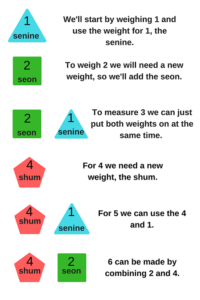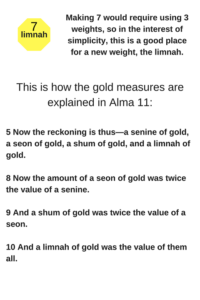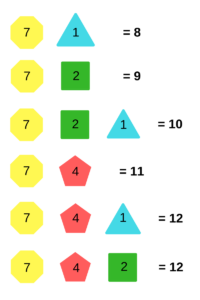 I must admit that until recently I had not heard the term Book of Mormon historicity or questioned the idea that The Book of Mormon was an actual history of ancient American people, written on gold plates, and translated by Joseph Smith through the power of God. Only during the past year did I become aware of the numerous arguments that are used to show that The Book of Mormon contains far too many errors and anachronisms to be an actual history and must instead be a work of fiction produced by Joseph Smith to defraud people into believing in his phony religion. (Note: I wasn’t familiar with the word anachronism until I saw it repeatedly used to criticize The Book of Mormon. So to save anyone else the trouble of looking it up, it means a word, phrase, object or event that is mistakenly placed in a time period where it doesn’t belong.)
I must admit that until recently I had not heard the term Book of Mormon historicity or questioned the idea that The Book of Mormon was an actual history of ancient American people, written on gold plates, and translated by Joseph Smith through the power of God. Only during the past year did I become aware of the numerous arguments that are used to show that The Book of Mormon contains far too many errors and anachronisms to be an actual history and must instead be a work of fiction produced by Joseph Smith to defraud people into believing in his phony religion. (Note: I wasn’t familiar with the word anachronism until I saw it repeatedly used to criticize The Book of Mormon. So to save anyone else the trouble of looking it up, it means a word, phrase, object or event that is mistakenly placed in a time period where it doesn’t belong.)
Learning about these arguments against Book of Mormon historicity has changed the way I read it and made it more interesting. This will be my third post on the topic; the first discussed swords and the second vocabulary. In this post, like those earlier posts, I will make no effort to resolve historicity issues. The topic is far too broad and I am absolutely not an expert in even the small issue I want to look at in this post. I named this blog Just Jana Sue for a reason; these are just my personal thoughts and ideas about the journey I am currently on. I am, however, a former math teacher, so let’s start with the understanding the problem.
In chapter 11 of Alma, we find a somewhat strange and out of place description of the monetary system used by the Nephites. Alma and Amulek have been testifying in Ammonihah, and in the previous chapter, Amulek has specifically condemned the wickedness and corruption of the lawyers and judges. In verse 22 one of these wicked men, Zeezrom, offers Amulek six onties of silver to deny the existence of a Supreme Being. It may be that the lengthy explanation of the wages of judges and the Nephite monetary system that precedes this bribe is intended to give us context. In the past, I had always breezed through this section, like I do with the begats (extensive genealogies) or the cubits (tabernacle measurements), always anxious to get back to the storyline.
In my older version of The Book of Mormon, the chapter heading begins with “Nephite coinage set forth”. LDS historian B. H. Roberts speaks of coins in The Book of Mormon and so does gospel scholar Hugh Nibley. My personal opinion is that Joseph Smith himself probably thought these verses referred to coins. I think no one questioned this idea until it was challenged. You see, archeologists haven’t found any evidence of coins dating to Book of Mormon times. Actually, there seems to be some debate on the subject, but for simplicity’s sake let’s just go with no coins. The evidence also shows that coins weren’t used in the old world until after Lehi’s departure. Therefore, coins in The Book of Mormon are an anachronism (just look at me, using my new vocabulary).
Here’s where things get interesting for me. You see, what is laid out so carefully in Alma doesn’t make nearly as much sense as coinage as it does as a system of weights. Let me explain it as I currently understand it—as always I welcome correction if I am misunderstanding something. First, let’s consider our current U.S. monetary values. We have the following coin values 1 (penny), 5 (nickel), 10 (dime), 25 (quarter), 50 (the no longer circulated half-dollar) and 100 (the unpopular dollar coin). We also have paper money in the following amounts—1, 5, 10, 20, 50, and 100 (larger bills haven’t been printed since 1945).
The Nephite system, by contrast, appears to be made up of three sets of measures: a small one for gold, a somewhat bigger one for silver, and a large one for grain. All three sets are based on the same values—1, 2, 4, and 7, plus simple fractions with a 1 in the numerator and a power of 2 in the denominator. Each set has equivalents in the other measures. I think this will be most clear if I take the same approach that I would have used with my junior high students and illustrate this with pictures and colors. Imagine that we are using a balance scale and measuring gold.

 With just these four weights, we have all we need for 8, 9, 10, 11, 12, and 13, and we never need more than three weights at a time.
With just these four weights, we have all we need for 8, 9, 10, 11, 12, and 13, and we never need more than three weights at a time.
I’m struggling with these graphics, so you can just trust me, or draw it out for yourself from here. Adding one more 7 weight allows us to weigh up to 20, after which we need only to add additional 7 weights each time we get to a multiple of seven.
To me, it makes sense that, despite what was believed in the past, the Nephites used weights rather than coins. The heading in the current editions has even been changed to reflect this possibility. It now reads, “Nephite monetary system is set forth”. This system of measurement appears to be consistent with what Lehi and his family would have seen in the Old World.
I’m not going to go into the cool, but slightly more difficult, fractional measurements today, other than to say that they also make mathematical sense and harmonize with what is known historically. I’m also not going to take time in this post to discuss the interesting connections between the names of the measurements and possible Hebrew words, but you can read about it in this much more scholarly article on these topics if you’re interested.
Please understand that I’m not arguing that this in any way proves Book of Mormon historicity, but I as a self-proclaimed math nerd I find it gives The Book of Mormon more depth and makes it more interesting. It also makes the Occam’s Razor argument—that I wrote about in an earlier blog more complicated. When critics say that Joseph Smith simply fabricated this book, it is one more piece of evidence that doesn’t comfortably fit.
Am I really supposed to believe that an uneducated farm hand somehow made up a monetary system that was so different from what he had seen, and yet fits so well with what current scholars would expect? I have heard many accounts of Joseph’s activities prior to the publication of The Book of Mormon and they seem to be the typical pursuits that were common for a young man living near America’s frontier during this time. Even if he had had access to all the instruction, materials, or information he would have needed to falsify such a convincing volume, it seems unlikely to me that there wouldn’t be numerous reports to confirm his many hours of research and study.
What I find most interesting in all of this, however, is how looking deeper at The Book of Mormon has changed me. Last week I wrote about Fowler’s stages of faith. I learned that one of the most beautiful things about Christ teaching in parables was the multiple layers of meaning, that could be understood by people at different stages of faith. Before I considered the arguments that people use to discredit The Book of Mormon and my testimony, I was more likely to read it for the stories and characters—or because I had set a goal or accepted a challenge. It seems that as I become more aware of the details contained in the book, I become less concerned about its historicity, and I am much more likely to focus on the application.
Let me try to be more clear. Jesus told a story about a woman who had ten coins and lost one. She searches diligently for it, lighting a lamp and sweeping the house. When it is finally found she rejoices with her friends. In one interpretation we put ourselves in the place of the coin and realize that if we are lost, Christ reaches out to us and rejoices when we are found. A different interpretation might put us instead in the place of the women and remind us of our obligation to use the light of Christ to lovingly search for his lost “coins” regardless of their efforts to stay lost. If instead, we put too much of our time and efforts into the details or historic nature of the women, coin, or lamp, we might miss the point entirely.
I believe that The Book of Mormon is exactly what Joseph Smith went to his grave claiming that it was, but more importantly, my lived experience builds my faith in this sacred book. I am confident that it helps me know Christ, and increases my ability to access His grace and follow Him.
Note: I don’t claim to be an expert, just an ordinary member trying to sort through complex issues. If I have missed something or gotten it wrong, I would really appreciate your comments. My goal is to be part of a civil conversation that helps me learn and promotes understanding. With this in mind, I would love to reach a larger audience. If you are willing to like or share this post or site on social media, I would be grateful.
Recent Comments